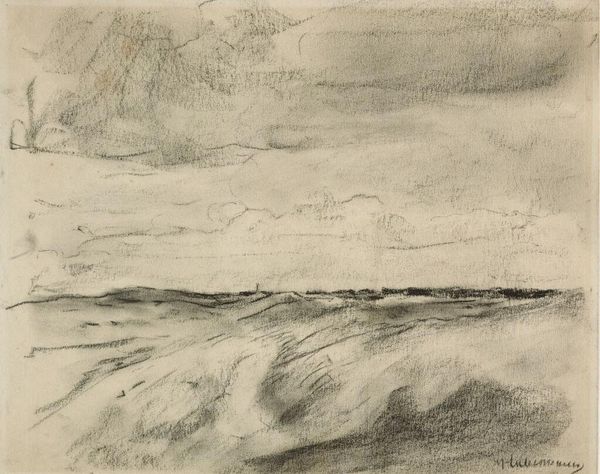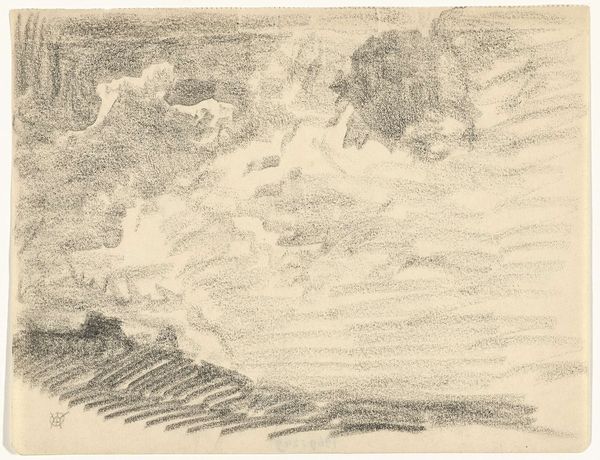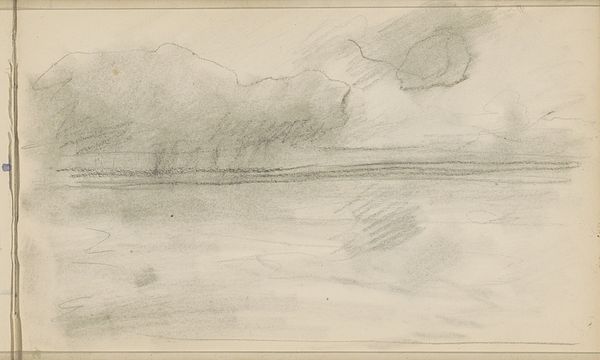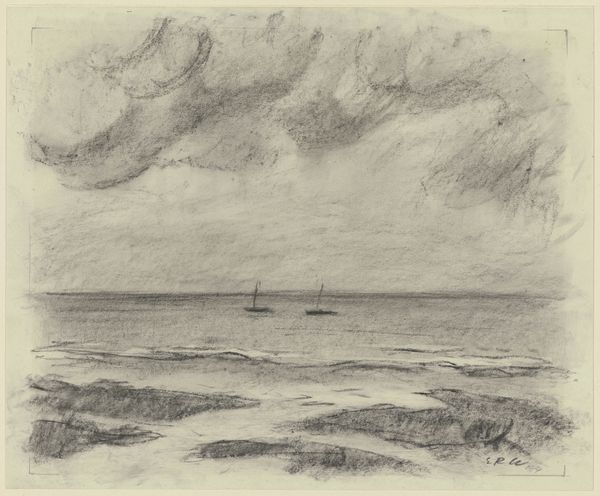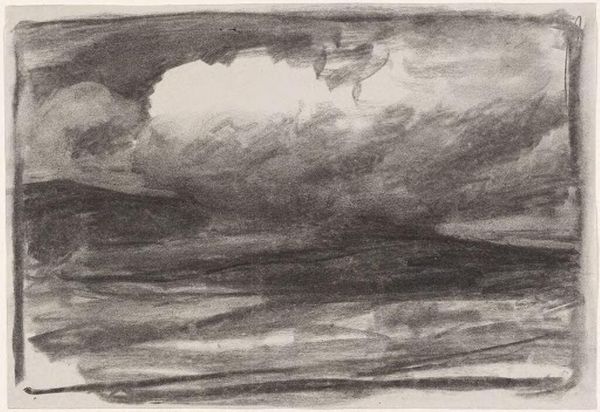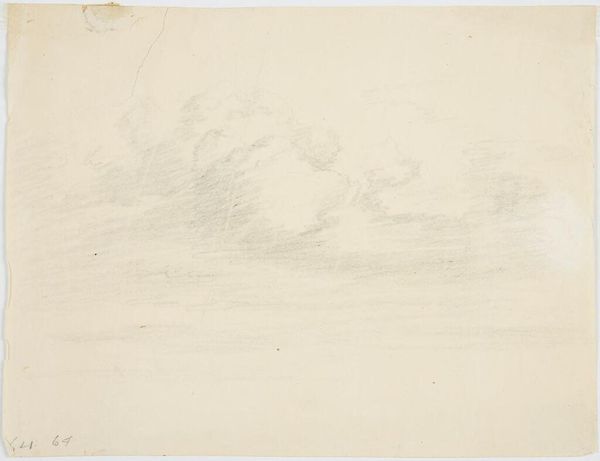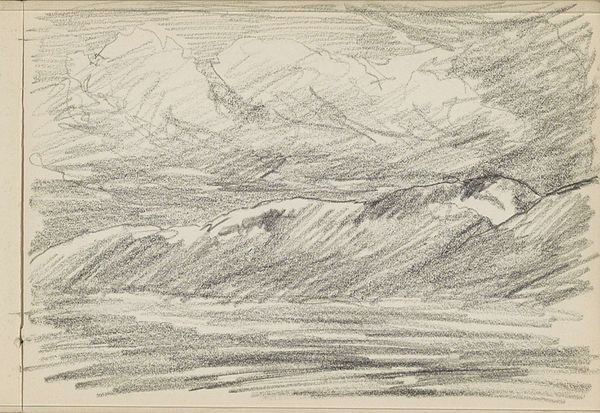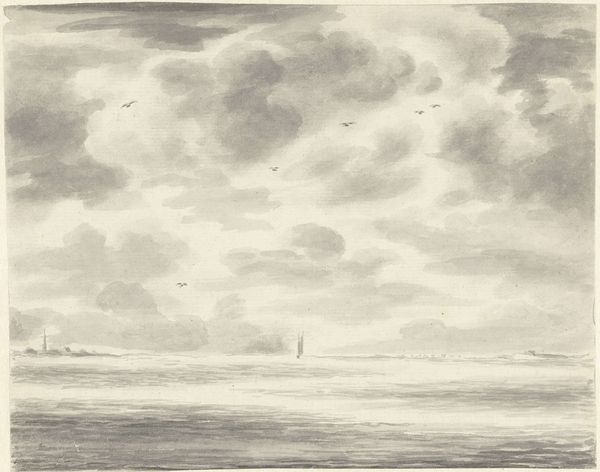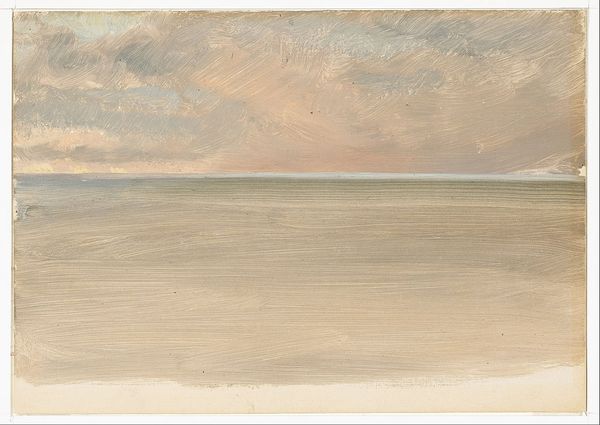
drawing, pencil
#
drawing
#
dutch-golden-age
#
impressionism
#
pencil sketch
#
landscape
#
etching
#
pencil
#
realism
Dimensions: height 215 mm, width 300 mm
Copyright: Rijks Museum: Open Domain
Curator: It's so evocative, this small sketch. Brooding, even. The sky seems ready to burst. Editor: That’s a sharp reading. You’re standing before Jozef Israëls’ "Landschap met donkere wolken," or "Landscape with Dark Clouds." It's believed to have been created sometime between 1834 and 1911 and is currently held here at the Rijksmuseum. You can see it's primarily pencil on paper. Curator: Pencil captures that ephemeral, fleeting quality of the light so well here, doesn't it? Like a memory fading even as you grasp for it. Notice how the lines darken towards the horizon line, emphasizing that meeting of sea and sky, that point of limit and possibility. Editor: Absolutely. Israëls, of course, was working within a charged political climate. How might this sort of landscape have resonated with viewers familiar with, say, social unrest? Curator: Oh, powerfully. Dark clouds in art have long been used as a visual metaphor for societal storms. I think we subconsciously relate dark, looming weather with moments of collective anxiety and fear, uncertainty for the future. This piece taps directly into that deeply ingrained response. But look, isn’t there something also hopeful about the small sliver of light breaking through on the horizon? Editor: That's the fascinating tension, isn’t it? Israëls provides this beacon—the implied potential for change and overcoming. It's subtle, almost hidden. How radical was it for the artist to find symbolism of freedom and societal reform, by using elements found within nature? Curator: Exactly! I think in that sliver of light we can see our own individual anxieties mirrored back, but tempered with a visual suggestion of perseverance and resolution. We look, and our inner monologue shifts slightly towards self-assurance. Editor: Israëls offered social critique that still resonates profoundly today. In his artwork, even threatening atmospheric conditions do little to completely suppress our need to overcome challenges. It is not enough to see things as they are. Curator: He offers us a beautiful reflection on finding strength within the shadow, and the ever present hope of transition. Editor: Thank you. We hope you appreciated this brief journey into Israëls’ atmospheric world and how landscape can mirror cultural concerns.
Comments
No comments
Be the first to comment and join the conversation on the ultimate creative platform.

